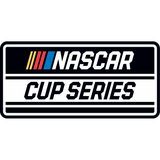Bob Pockrass
FOX Motorsports Insider
The fact that it took a half-minute for NASCAR to throw the caution after Cody Ware slammed into the Turn 6 tire barrier at Chicago is understandable at first glance.
NASCAR had been waiting to see if drivers could move their cars out of the barriers and harm’s way all day. Kyle Larson and Kyle Busch in previous years had appeared to be buried in tires and still able to move. There was potential rain and lightning coming (although NASCAR says that wasn’t a reason for the delay).
When Ware dropped his window net, signaling he was OK but not going to continue, NASCAR threw the caution. By that time, Shane van Gisbergen had passed the start-finish line and taken the white flag, meaning the race wouldn’t be resumed and as long as he kept reasonable speed, he’d be the winner.

Shane Van Gisbergen held on to win in Chicago after a controversial finish.
The fans didn’t get to see a green-flag finish, but there was a good chance they wouldn’t have anyway as rains fell soon after. And while in some instances, NASCAR would have red-flagged the race and waited, that would have been unlikely with the potential for lightning.
Tyler Reddick, with fresher tires, would have had the best shot to get past van Gisbergen and obviously would have loved a shot at the win. But this wasn’t a decision made to thwart 23XI Racing (which is suing NASCAR) from a victory. And let’s face it, van Gisbergen had done more than enough to earn the victory. It wasn’t like you could say the wrong driver won the race.
But the real problem is why NASCAR didn’t realize how hard a hit Ware had — NASCAR said if it knew, it would have thrown the caution immediately. With the technology available these days, it feels as if there should be a way for NASCAR to know quicker that a driver slammed into a wall at 90+ miles an hour and came to an abrupt stop.
NASCAR certainly had monitors and cameras in that location. While it is understandable that a race director might be looking at a different monitor — just like the race director could be looking at the leaders at one part of an oval and not see an incident in another part — it appears that more needs to be done to have monitors, well, monitored.
And once NASCAR sees a driver in a barrier, there seems as if there should be a way for an official to immediately start monitoring the radio channel. Ware did say he needed help and that might have been heard — although it was somewhat faint on the transmission recording that I heard when going back and reviewing radio transmissions from that time in the race.
When the crash happened, the official in that area did radio in “6” to alert the race director to look at Turn 6. Whether in this instance, the official should have been more adamant is debatable. What would be the line where an official needs to be more animated on the radio to the point where the race director would immediately throw the caution?
NASCAR already has had some consistency issues with two or three different race directors rotating in that position throughout the year and through the three national series. Asking corner officials to give their opinions — some would say on a road course, a corner official should have the ability to call for a caution as they do in some other road-racing series — could just create more confusion and more debate.

The aftermath of Cody Ware’s hard crash at Chicago.
But it also could decrease the response time when it is vitally needed for a driver who is injured. Thankfully, Ware did get out of the car under his own power and was seen and released from the care center.
NASCAR doesn’t have live crash data — all of that data is stored in a system in the car but not immediately available as in some other series where a G-force number could trigger a caution.
But in this instance, could NASCAR have called up the car’s telemetry quicker and/or found the replay for its monitor quicker? NASCAR is in the process of determining areas that officials in its production facility in North Carolina can help with the officiating and running of the race. Whether something such as that can be reviewed in less than 30 seconds and communicated probably isn’t a given but certainly something to be researched.
What makes this situation even more frustrating is that last year in the Xfinity race on the Charlotte road course, there was a similar situation where Leland Honeyman was deep in the tire barrier and it took NASCAR a long time to throw the caution — throwing it just before leader Parker Kligerman took the white flag (and eventually lost the race).
One of the biggest challenges for NASCAR is how to use all the tools at its disposal to officiate and manage races, especially as it has increased the number of road courses in recent years. The Cody Ware wreck at the end of the race Sunday certainly should create more urgency to seek ways to ensure that wrecks like his are not missed.
Bob Pockrass covers NASCAR and INDYCAR for FOX Sports. He has spent decades covering motorsports, including over 30 Daytona 500s, with stints at ESPN, Sporting News, NASCAR Scene magazine and The (Daytona Beach) News-Journal. Follow him on Twitter @bobpockrass.
Want great stories delivered right to your inbox? Create or log in to your FOX Sports account, and follow leagues, teams and players to receive a personalized newsletter daily!
recommended

Get more from the NASCAR Cup Series Follow your favorites to get information about games, news and more


